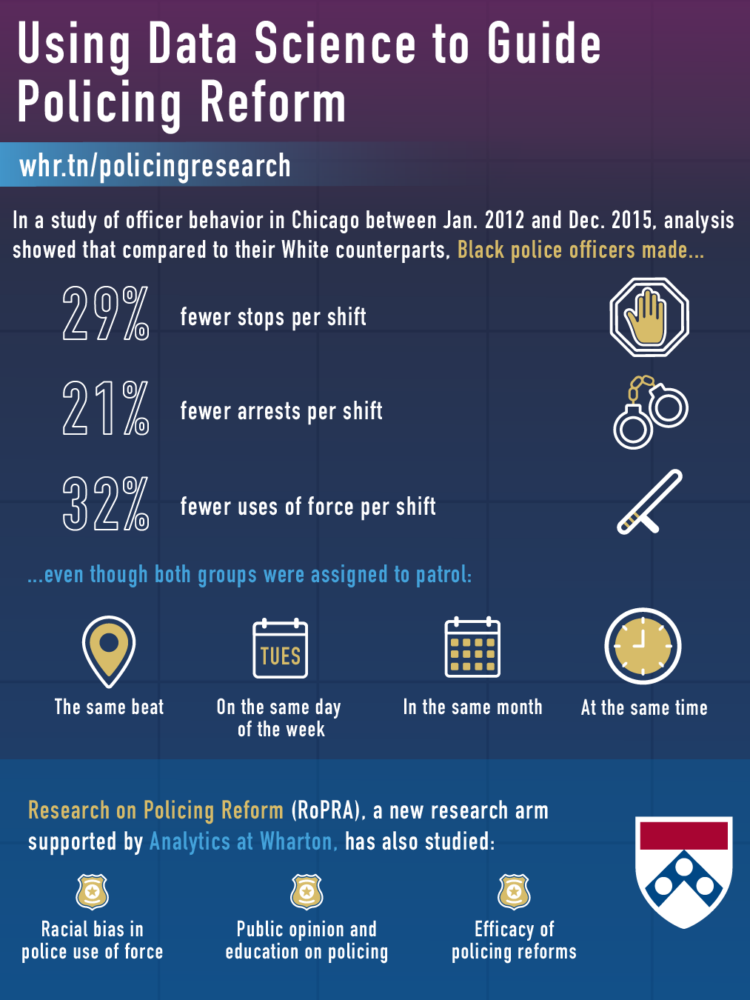The Role of Officer Race and Gender in Police-Civilian Interactions in Chicago
AUTHORS
Bocar A. Ba, Department of Economics, University of California Irvine
Dean Knox, Operations, Information and Decisions Department, Wharton School, University of Pennsylvania,
Jonathan Mummolo, Department of Politics, School of Public and International Affairs, Princeton University
Roman Rivera, Department of Economics, Columbia University
DIVERSITY IN POLICING RESEARCH STUDY
In the wake of high-profile police shootings of Black Americans, it is important to know whether the race and gender of officers and civilians affect their interactions. Ba et al. overcame previous data constraints and found that Hispanic and Black officers make far fewer stops and arrests and use force less than white officers, especially against Black civilians. These differences are largest in majority-Black neighborhoods in the city of Chicago (see the Perspective by Goff). Female officers also use less force than male officers. These effects are supportive of the efficacy of increasing diversity in police forces.
ABSTRACT
Diversification is a widely proposed policing reform, but its impact is difficult to assess. We used records of millions of daily patrol assignments, determined through fixed rules and preassigned rotations that mitigate self-selection, to compare the average behavior of officers of different demographic profiles working in comparable conditions. Relative to white officers, Black and Hispanic officers make far fewer stops and arrests, and they use force less often, especially against Black civilians. These effects are largest in majority-Black areas of Chicago and stem from reduced focus on enforcing low-level offenses, with greatest impact on Black civilians. Female officers also use less force than males, a result that holds within all racial groups. These results suggest that diversity reforms can improve police treatment of minority communities.



